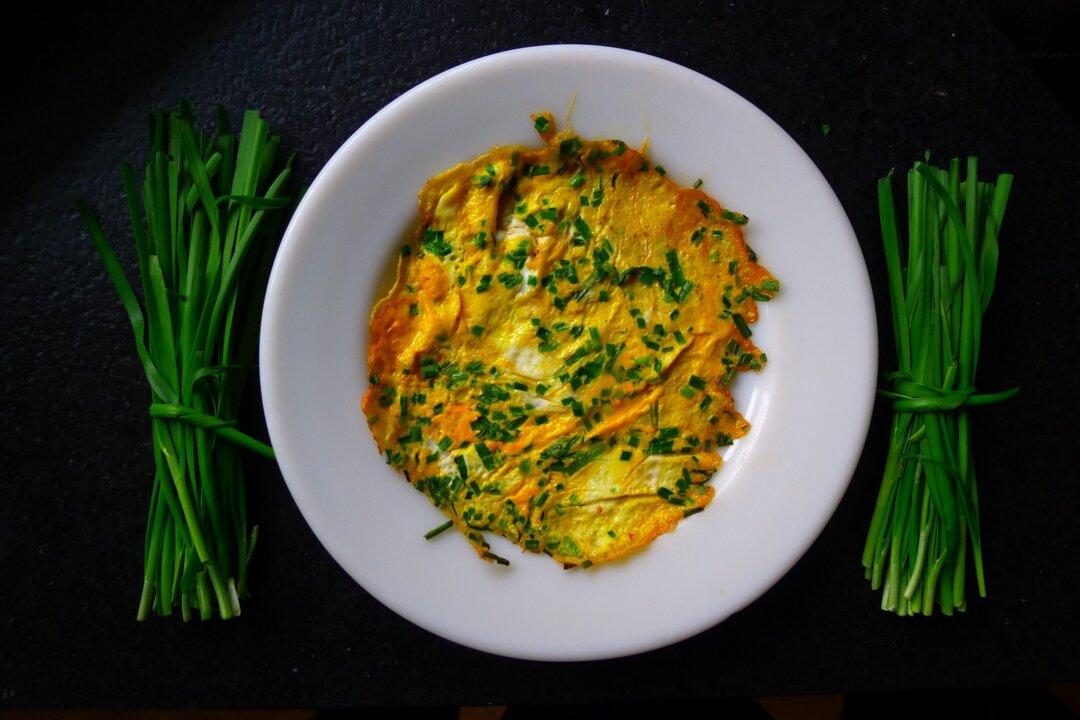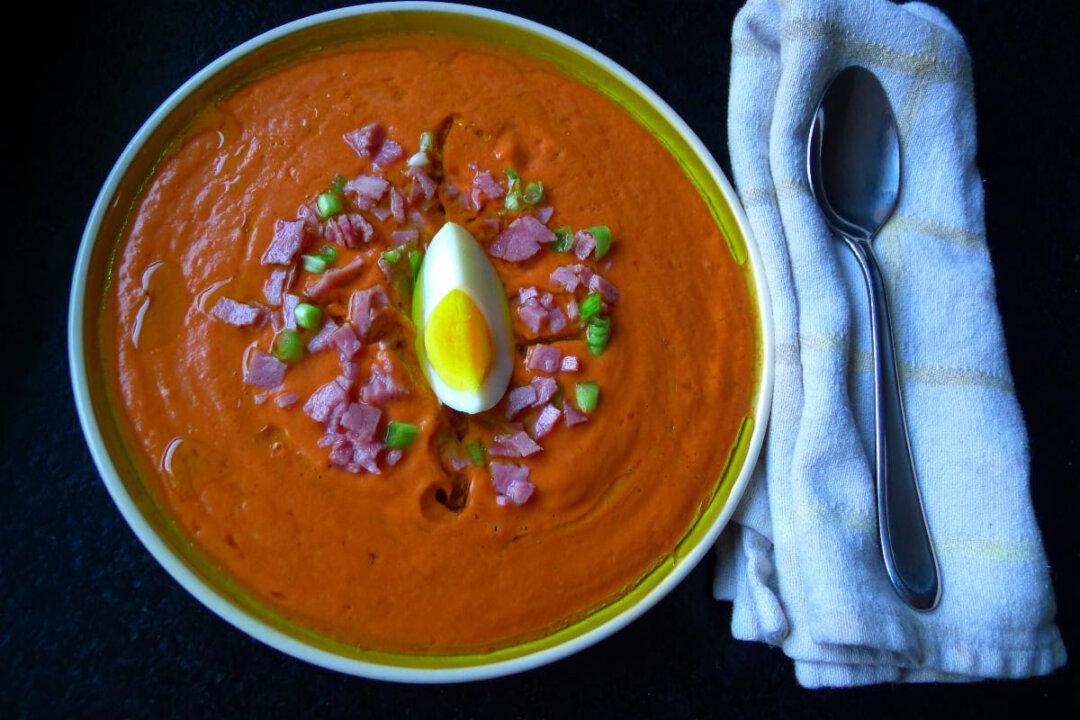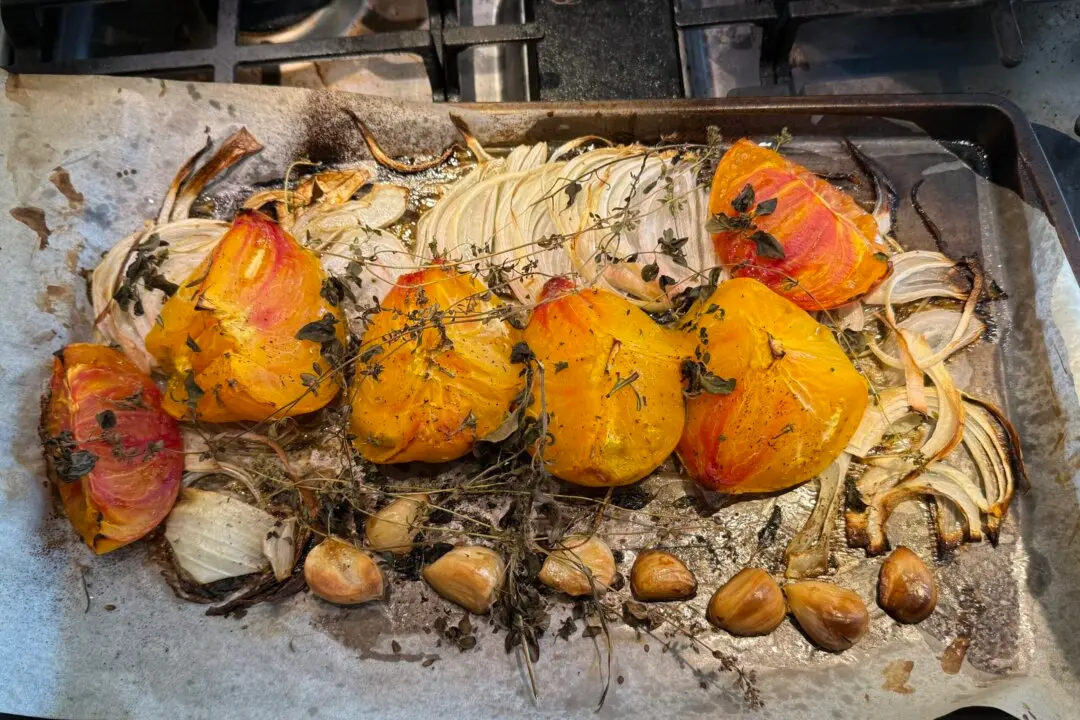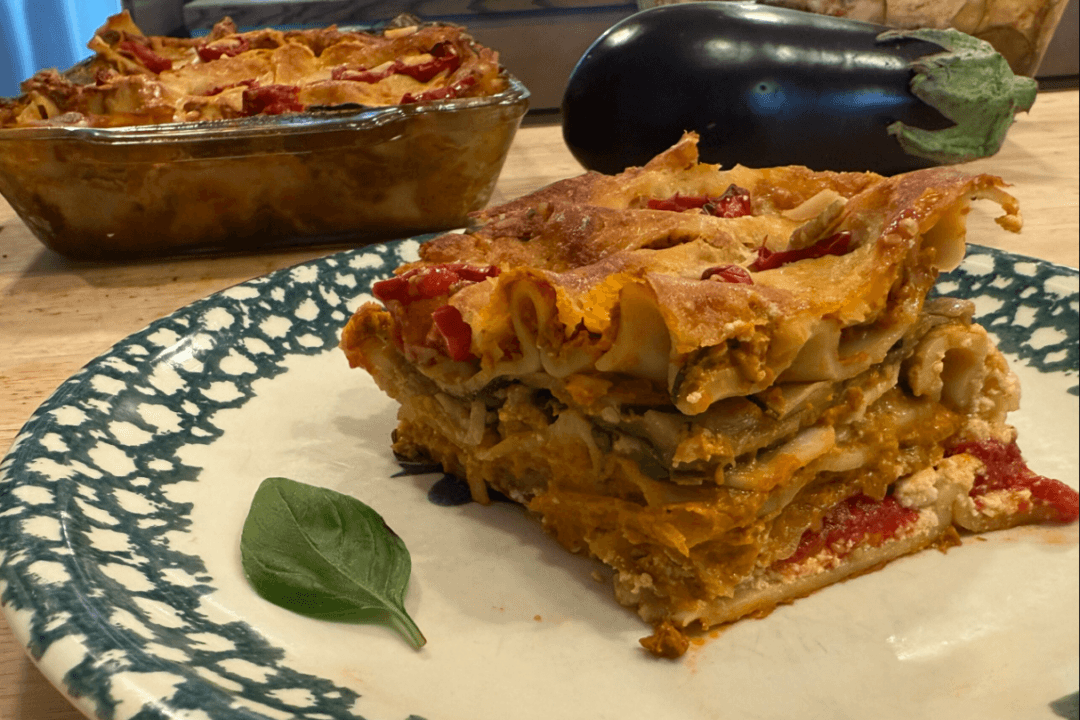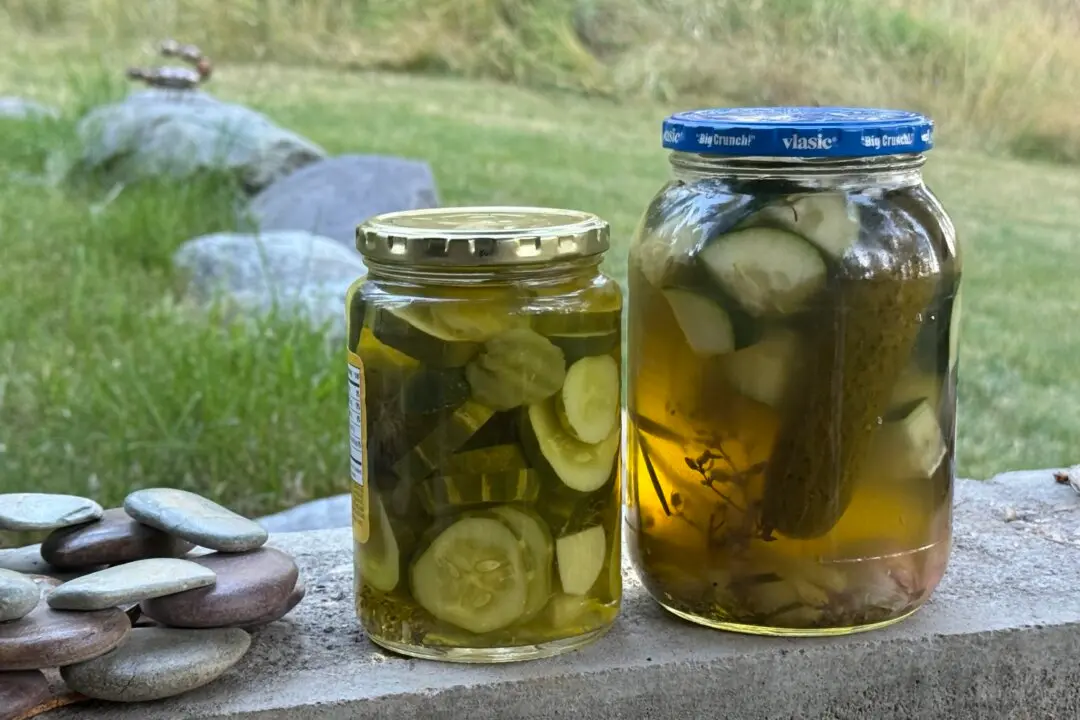I’ve been getting Chinese chives at the farmers market from a vendor named Nancy. She told me how to make a pancake, as she calls it, with egg, sesame oil, and her scallion-sized chives.
Chive pancakes usually have some glutinous form of starch, such as flour or pancake mix. But Nancy’s version, from “northern China,” has none. While it’s technically more an omelet than pancake, when it comes to Chinese chives, I do what Nancy says.

